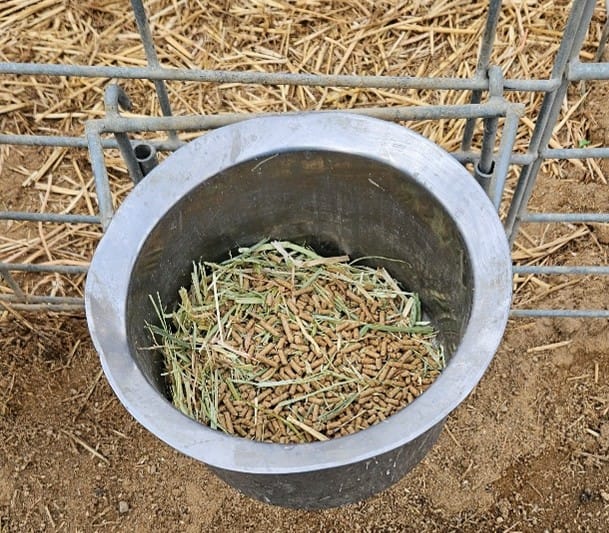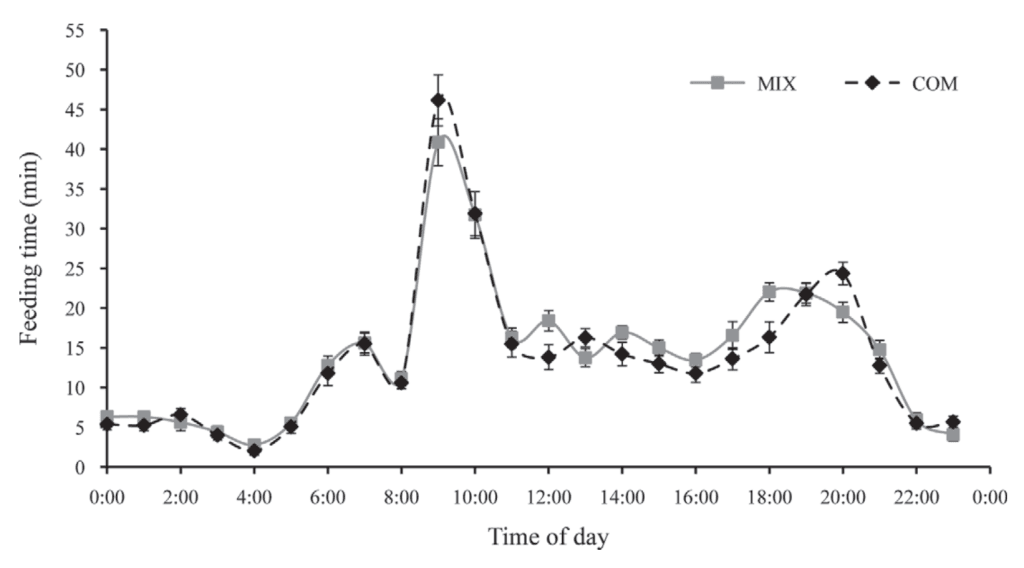Introduction
I recently had an interesting conversation with a calf raiser in Asia who was working to optimize his feeding protocols around weaning to reduce the chronic diarrhea that began as calves increased starter intake as milk was reduced in preparation for weaning.
The Situation
The farm raised about 8,000 calves per year in an arid area in Inner Mongolia. The farm was very well run, modern, and with high levels of sanitation. Preweaning morbidity and mortality were minimal. The farm fed up to 12 L of milk per day to about 9 weeks of age, then gradually reduce milk intake to weaning at about 12 weeks. The starter was formulated and manufactured at a local mill, and the formula was unknown. We estimated that it contained significant starch and NFC (>30%) as indicated by the ingredient list. Once calves were weaned, they were moved into group pens of about 20 calves per pen. There was plenty of space inside each pen, which were in an open-sided, well-ventilated barn. Feed and water were always available. Free choice mixed grass hay was offered in the feed bunk alongside the grain and calves had free access to both grain and hay as they wanted.
As starter intake increased with the decreasing intake of milk, many calves developed feces with increased liquid content. The feces occasionally contained small bubbles, indicating fermentation of starch / NFC and clear cases of acidosis. The diarrhea gradually disappeared as calves were moved to a TMR that contained higher amounts of hay, corn silage and less concentrates. Overall, the diarrhea episode lasted about 45 days. The calves appeared otherwise healthy and growth rates were excellent.
The First Intervention
So, what was happening on this farm? If you were thinking that high intakes of starch from grain coupled with little forage intake (for calves that didn’t eat much forage) were responsible for the acidosis and diarrhea, you’d be thinking like me. My “gut feeling” (pardon the pun) that lots of NFC in the starter was fermented rapidly in the rumen, causing low pH, lack of fiber digestion, and acidosis. This situation is quite common, particularly when calves are being weaned from high amounts of liquid. So, my recommendation was to create a “dry TMR” of about 10% forage and 90% concentrate. The chopped hay could be mixed with the grain so calves wouldn’t have a choice of how much grain or hay to eat. The forage should be sufficient to minimize the drop in pH and control the acidosis. The producer agreed to implement the change immediately. OK! So, let’s make the change and see what happens.
The Second Intervention
After a couple of months of implementation, I reached out to the producer to see how things were going. Were the calves still scouring? The producer reported that scours were reduced significantly, but there were still incidences of diarrhea that the management team found unacceptable. They were still looking for answers.

I asked to see a photo of the blend and inquired about how the product was being fed. The photo shows some immediate issues. First, there’s no way that the mixture contains 10% (by weight) of forage. There’s perhaps 2% or so, but no way there’s 10% in the bucket. It turns out that the workers assumed that the inclusion rate was intended to be 10% by volume and not weight. Secondly, the chop length of the forage was quite long and it’s quite possible that the calves were separating the forage and simply dropping it out of the bucket. And, finally, the farm team wanted to ensure that the calves were eating everything, so they let the calves run out of feed during the night and eat too much in the morning.
There are a couple of important points to consider here. The first is the normal diurnal variation in calf starter intake in weaned calves. Though we assume that calves eat more or less constantly throughout the day, there is actually quite a lot of variation in the way that calves eat.
A nice study by Miller-Cushon et al. (2013) shows the diurnal variation in feed intake in weaned calves fed a mixture of ingredients (dry TMR) or individual components as forage and grain. There is a clear increase in the amount of time calves spent eating from about 8 a.m. to 11 a.m. suggesting that calves tend to eat more in the mornings than other times of the day. This is consistent with many on-farm observations that weaned calves maintain a “morning schedule” where they tend to eat more feed than other times of the day.
The combination of a relative lack of forage in the dry TMR, long forage length, semi-limit feeding, and high NFC content in the grain, and we find some likely contributors to the continued diarrhea occurring around weaning.

So, the recommendations reiterated to the farm’s management team were to measure and mix the dry TMR by weight, chop the forage finer to minimize the chance of separation of particles, and maintain feed and water available at all times. The team agreed to implement these changes, and we’ll check back in a couple of months.
Summary
On-farm protocols are important – and it’s important that they be properly conveyed from the management team to the workers implementing them. In this case, the breakdown in communication was easily corrected with some additional training and explanation of the reason for providing the proper amount of forage. Hopefully, these adjustments to an otherwise excellent calf program will improve efficiency and result in even better cows.
References
Miller-Cushon, E. K., R. Bergeron, K. E. Leslie, G. J. Mason, and T. J. DeVries. 2013. Effect of feed presentation on feeding patterns of dairy calves. J. Dairy Sci. . 96 :7260–7268. https://www.sciencedirect.com/science/article/pii/S0022030213006255.